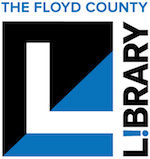May is an observation month for a variety of different conditions, awareness’s, and cultures (including some we’ve covered in blog posts), but there is one that is close to my heart: Ehlers-Danlos Syndrome Awareness. You may be thinking, “what is Ehlers-Danlos Syndrome?” That was my question when I sat in the orthopedic surgeons office, waiting to have my second shoulder surgery, when he said he was going to test me for the condition. Ehlers-Danlos Syndrome (EDS) is a condition that affects the connective tissues of, primarily, the joints, skin, and blood vessels. EDS is an inherited condition and it is commonly diagnosed through genetic testing, as geneticists will be able to identify which type(s) an individual may have. It affects people differently based on the “type” you have, as different types affect different areas of the body (13 types in total).
One type of EDS is hypermobility EDS (or hEDS), where frequent joint dislocation and degenerative joint disease are common. This type is less severe than some other types, but it is accompanied by baseline chronic pain and the potential for significant physical and mental health issues.
Now, you may be questioning, what causes EDS? The answer lies within the connective tissue and the absence of necessary collagen. Connective tissue provides the body with with structure and support for tissues and organs (including bone, ligaments, tendons, blood vessels, and more). There are several proteins in connective tissues and one of the main proteins is collagen. With EDS, there are faults with the genes that determine how the body creates collagen and the result is weaker connective tissues. With weak connective tissue, the results could include joint dislocations, joint instability, skin hyperextensibility, scarring, and other issues that associates with different types of EDS.
So, now that we know what EDS is, what can we do? Raising awareness is key when helping those with EDS. While it is a rare condition, the cases are increasing every year. Sharing information on social media, spreading information through word of mouth, and continuing to read and research the condition are all important to raise awareness.
If you would like to learn more about EDS, or if you’d like to learn more about how to help, visit the Ehlers-Danlos Society webpage at: https://www.ehlers-danlos.com/. The Ehlers-Danlos Society is a non-profit organization made up of individuals, caregivers, healthcare professionals, and advocates. This team works on building awareness across the globe by conducting research, educational initiatives, advocacy, awareness campaigns, and instructions on care.
